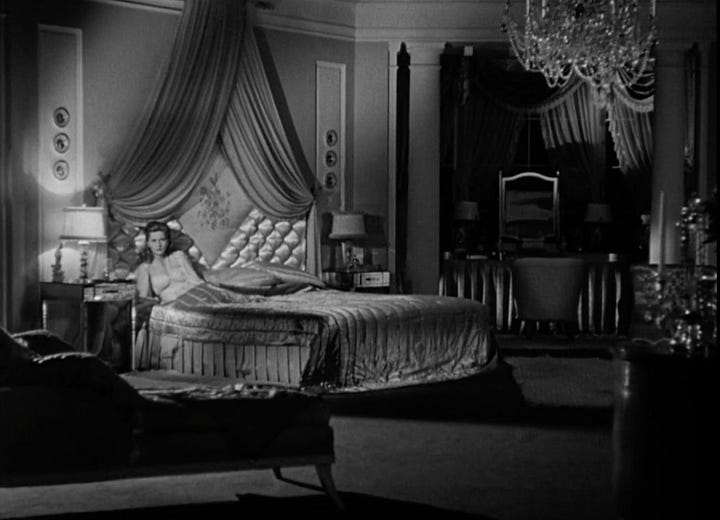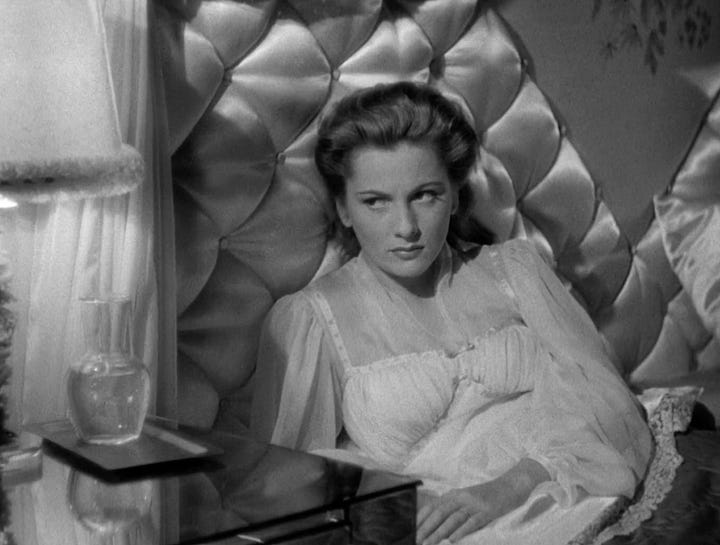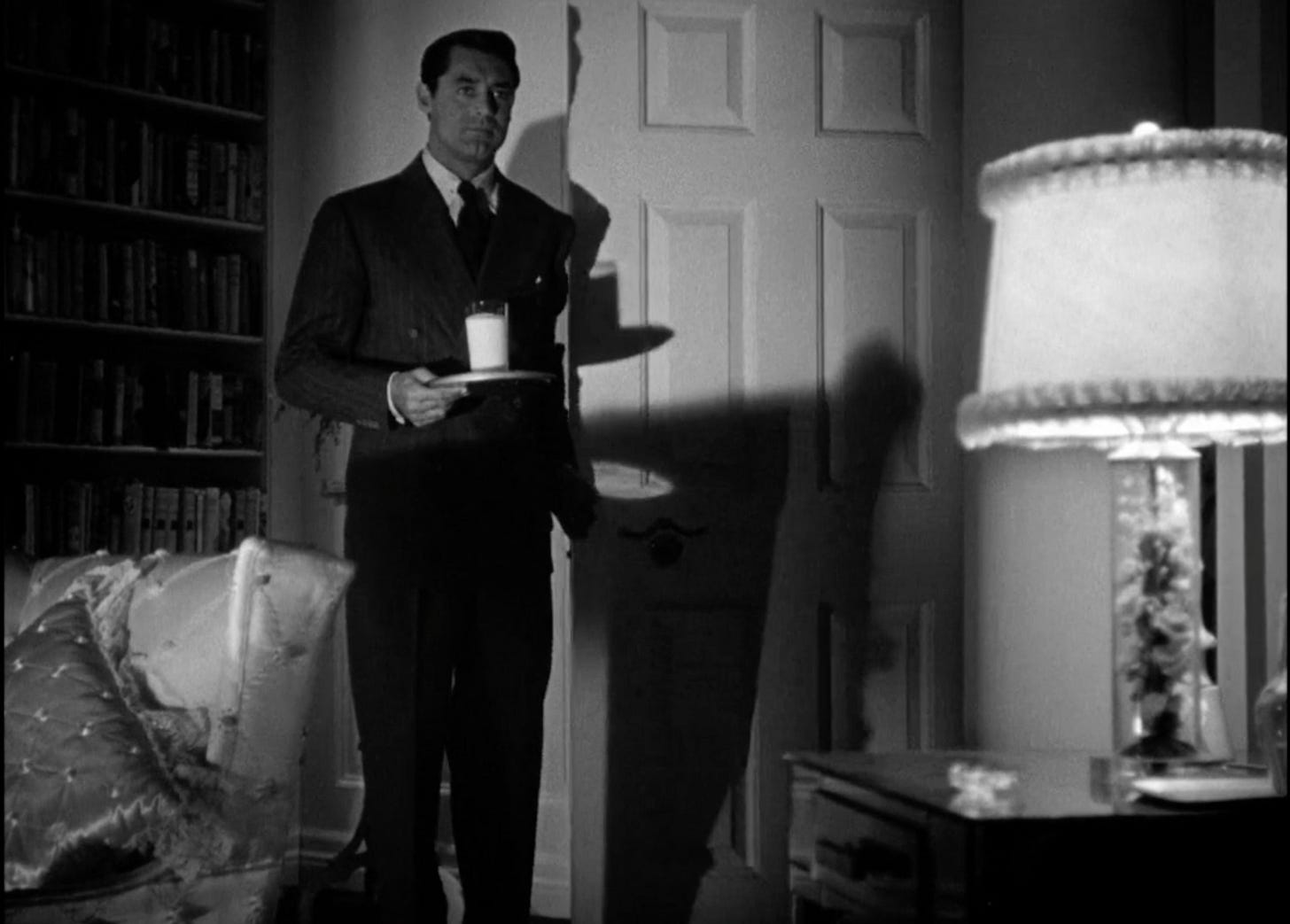Ominous Objects: SUSPICION and the Glowing Glass
I’ve looked at one Hitchcock film featuring a dangerous liquid, but he took ‘highlighting an object’ even more literally in 1941’s Suspicion!
Many elements work together to make this glass ominous, including large and teeny lighting techniques, longer camera moves, moving between distinct closeup and wide shots, and what is not shown at different times.
Camera Moves
The fewer literal breaks in the action, the less chance for the audience to catch its breath. This oner also lets us take in the creative and stark light changes, including the way Grant’s shadow moves to let the glinting prism of the glass shine on the floor.
Glow Baby, Glow
Hitchcock put a small light in the milk to give it a phosphorescent glow, making it stand out. Once we’ve been tracing its luminescence so long through darkness, even in the more-lit room it feels . . . off.
High Contrast
Hitch goes hard here, not just framing glowing the white milk against a pitch black suit, but shrouding anything which could draw attention from the milk (specifically, Cary Grant’s face) in shadow.
This shot is notably different than the production’s promotional stills, which want to feature Grant’s handsome, suspicious mug as much as possible.
It’s best summed up in this quote from A Psychoanalysis of Milk: The Case of Alfred Hitchcock:
As [Johnnie] silently glides upstairs past a series of sentimental pictures that appear to portray flirtatious couples, he is a dense black mass silhouetted against the pale wall and the prominent dado-rail beneath it. The surface of this wall is dramatically latticed with shadows from the bannisters, as if the entire house is caught in a net. Or in a spider’s web. One of the publicity stills for the film included the following caption: ‘Cunning, suggested by spiderlike shadows, seems to climb the stairs hand in hand with Cary Grant as he carries a glass of (poisoned?) milk to Miss Fontaine.’ Johnnie’s own shadow, the spider weaving its way through the web, appears then disappears against this background.
Closeup to Wide, Light to Dark
As we recently looked at in this sequence from Interview with the Vampire, cutting between sharply contrasting shots within a tense sequence can heighten terror and suspense, whether moving from tight closeups to wide shots, or dark shots to light. Suspicion does both at once.
This sequence starts with a closeup of a clock before showing Lina alone in her large, lonely room, counting the moments. Rather than cutting from that shot to the wide of Johnnie carrying the milk, it moves in to look at a medium of her tense face above a bright white nightgown, holding a moment to let us absorb her tension before cutting to that stark, dark wide of Johnnie.




Note the medium shot of Lina (above) also shows us the empty spot on her night table where the milk will soon be set (below).
Takeaways
Hitchcock throws a whole toolbox of techniques at this sequence to heighten the tension, all in service of keeping us riveted to the suspicious glass and heightening our distrust of Johnnie.
The film was notoriously forced to renege on its ending which confirmed Johnnie’s murderous intent, but for those who read the signs, Hitchcock clearly signals Johnnie was up to no good.




